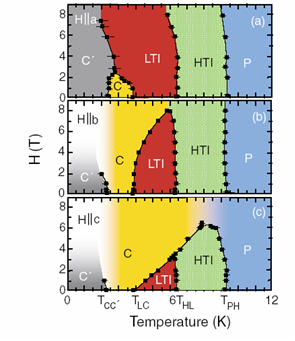Magnetism and ferroelectricity in rare earth oxides
Amnon Aharony
Insulating rare-earth oxides often exhibit rich magnetic phase diagrams, with interesting competing magnetic structures. Often, these phase diagrams are due to structures which are close to cubic or tetragonal. In these highly symmetric structures, the magnetic ground states are highly degenerate, implying magnetic frustration. We have studied several mechanisms which lift the frustration and yield a variety of magnetic ordered states. One mechanism involves quantum fluctuations. The zero point motion associated with these fluctuations creates "order out of disorder", and chooses some ground states over others. The second mechanism involves small magnetic anisotropies, usually due to spin-orbit interactions. Again, these anisotropies lift the degeneracy, and pick specific structures. Examples include several cuprates (the parents of high temperature superconductors) and nickel vanadate, whose structure is close to a planar Kagome lattice. The figure shows the temperature-magnetic field phase diagram of the latter material, which contains various types of (commensurate and incommensurate) magnetic order. Interestingly, this material shows multiferroic behavior: the low temperature incommensurate magnetic phase ("LTI") also exhibits ferroelectric order, which can thus be switched on and off by both a magnetic and an electric field. This has potential applications for spintronics.
